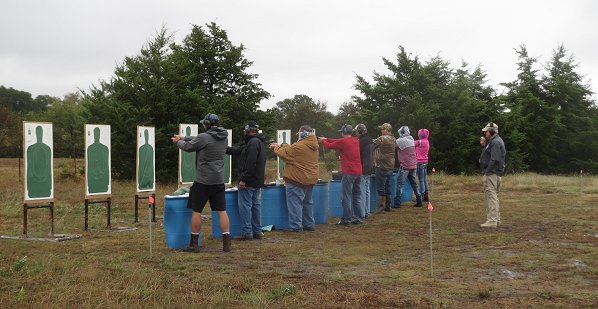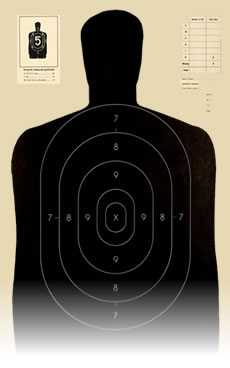Quick Links
McKinney Firearms Training, LLC
The state-mandated course required to obtain a Texas License to Carry. The classroom portion is done online, through a provider with whom we have negotiated a discount:
texascarryacademy.com/vendors/mckinney-firearms-training-llc/
DO NOT try to log in.
(If you have done the online part through another provider, just register for the range training, Step 3 below).
After finishing the online course, you will come to the range for an hour for a Range Training module, and the Proficiency test. You can also do the online course after the range training. My paperwork is different.
Also required, separately, are a background check and fingerprinting. We will guide you through the entire process.
Please note that this is not a class for beginners. You need to be able to load and shoot a handgun, without assistance.
Cost: $90.00 (both parts combined), or $45.00 (Proficiency only).
Proficiency offered as private session: $90.00

Handgun License Class: Reserve a space now!
Location
We operate a private range a few miles E of Plano.
Eligibility
Each student must determine for themselves their eligibility to obtain a License to Carry.
Please review eligibility requirements closely before registering, as we cannot be responsible for this.
The DPS makes the final determination on these matters.
A person is eligible for a license to carry a concealed handgun if the person:
Process
Training
The State of Texas is very supportive of the License to Carry program, and makes it as easy as possible, within the
parameters required to balance public safety and Constitutional rights. State law mandates the eligibility requirements,
fees, the content of the course, the written test, the proficiency test, and all paperwork, as well as licensing of
individuals to teach License to Carry classes.
The classroom part is now done entirely online, takes about 4 hours to complete, and consists of several modules, covering

The written test is short, and includes multiple-choice and true-false questions only. Anyone who pays attention to the presentations should have no problem with it.
The shooting proficiency test is done after an hour of range training. You will be shooting at a large target, at a close distance. Few people have any trouble with it, but if necessary, we will work with you until you can pass it easily. If you want to practice it beforehand (recommended), the course of fire is here. On the standard B-27 target, shown at right, everything in the 8, 9, and 10 rings counts 5 points. The 7 ring counts 4 points, and everything outside the 7 ring (but inside the silhouette) counts 3 points. All other shots count zero.
The caliber requirement has now been eliminated, so people are now allowed to use pistols chambered in such exotic calibers as 5.7x28 and .17 HMR, although these are either rare or expensive. A more common caliber in this range is the iconic .22 LR. There are many .22 pistols and revolvers to choose from, but many of them are very small, like the Beretta "Bobcat". Something the size of a cell phone is not a good choice for a shooting test. If you elect to go this way, I would recommend a longer gun, like one of these:
Keep in mind that the .22 is still not generally considered to have sufficient stopping power for self defense. Another option, though harder to find, is the .22 Magnum (.22 WMR), which is very close to the .380 ACP in FBI penetration tests.
Please do not bring a single-action .22 revolver! Those are distinguished by a loading gate on the right side, instead of a cylinder that swings out for loading. People bringing a .22 for the Proficiency are usually not experienced enough to understand the danger in loading a single-action revolver, and I do not want to take the risk.